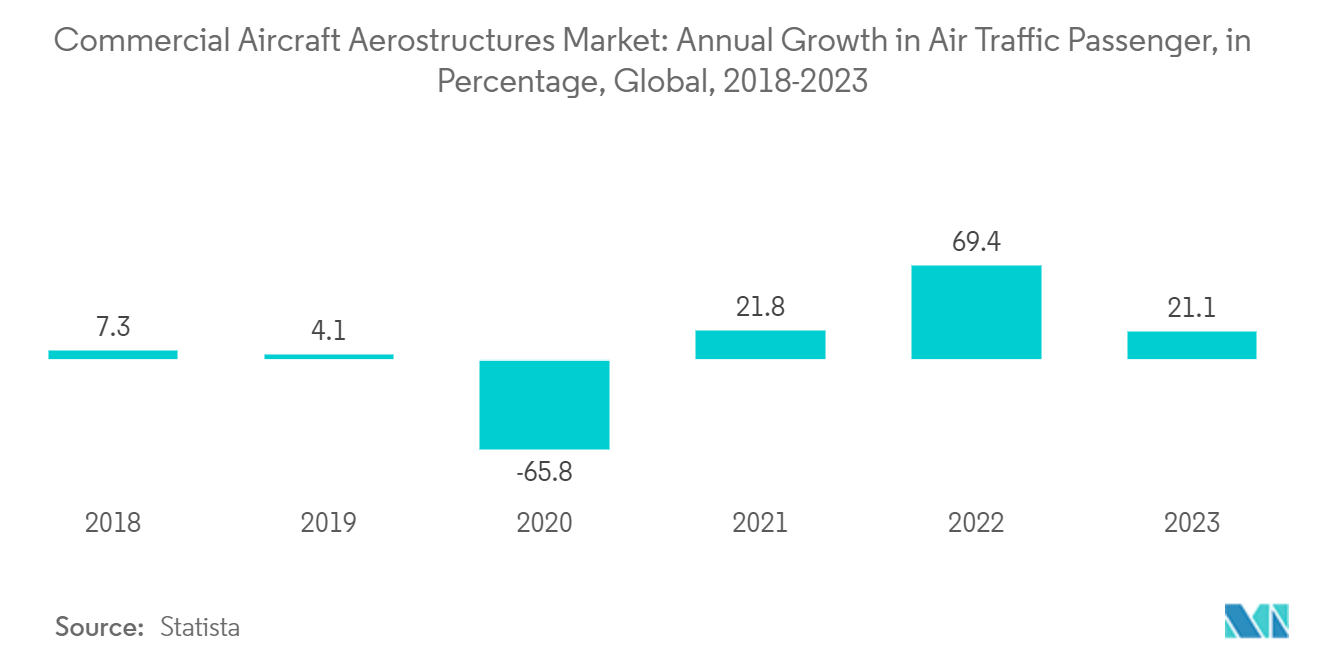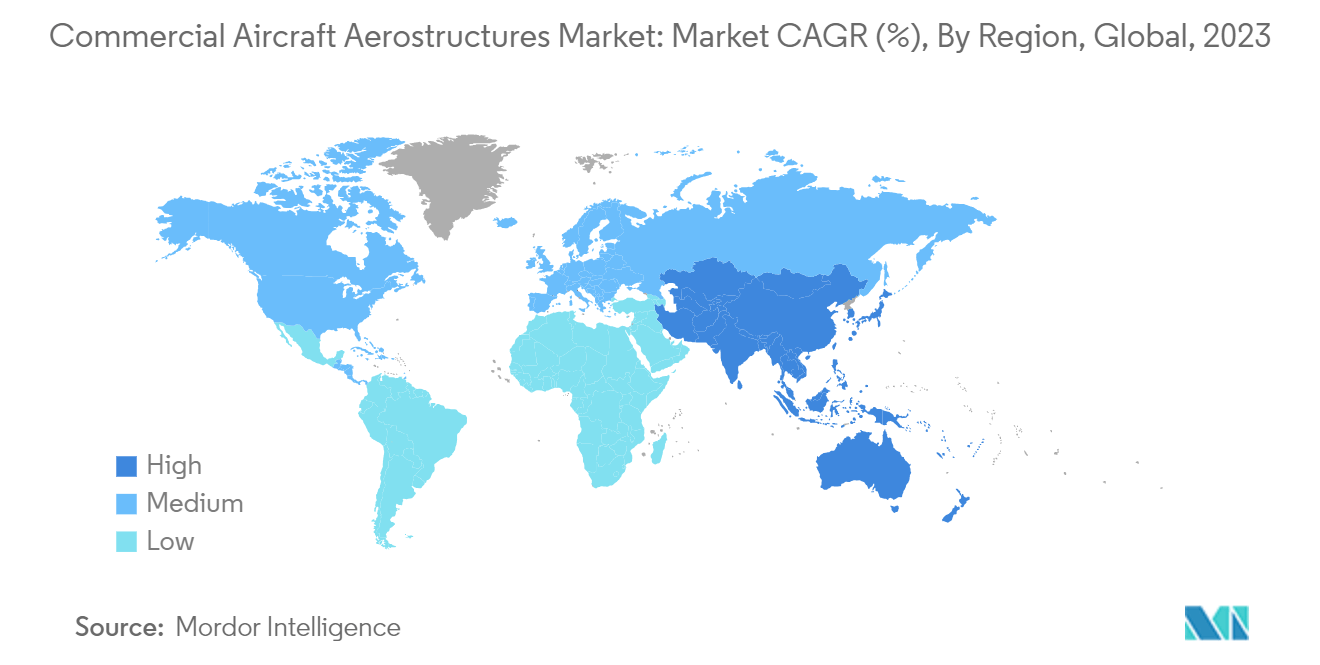Market Trends of Commercial Aircraft Aerostructures Industry
OEMs Segment to Dominate Market Share During the Forecast Period
The significant increase in global passenger traffic drove airline operators to initiate procurement drives and place firm orders for new-generation aircraft. In 2022, Airbus delivered 676 commercial aircraft, while Boeing delivered 480. Aircraft OEMs are continuously honing their supply chain to reduce the backlog of orders and ensure on-time delivery to the airlines. Several new orders were placed during 2022, which encouraged associated aerostructure manufacturers and integrators alike to enhance their production capabilities. For instance, in June 2023, Indigo (India) ordered 500 Airbus A320neo family planes at the Paris Air Show.
Similarly, Air India (India) signed purchase agreements for 250 Airbus aircraft and 220 new Boeing jets worth USD 70 billion. Air India's orders include 70 widebody planes, comprising 34 A350-1000s and six A350-900s from Airbus, 20 B787 Dreamliners, and 10 B777Xs from Boeing. It also includes 140 Airbus A320neo, 70 Airbus A321neo, and 190 Boeing B737 MAX narrowbody aircraft. The airline also signed options to buy an additional 70 planes from Boeing, including 50 B737 MAXs and 20 B787 Dreamliners. Such procurement orders would drive the business prospects of the market players during the forecast period.

Asia-Pacific to Witness Highest Growth During the Forecast Period
The robust economic growth, coupled with favorable population and demographic profiles of the populace in developing countries, especially in the Asia-Pacific region, is driving the air passenger traffic in the region. It resulted in a steady increase in the demand for aircraft originating from Asia-Pacific. By 2025, China is forecasted to become the world's largest aviation market in terms of air traffic. India is forecasted to develop into the world's third-largest aviation market, while other countries, such as Indonesia and Thailand, are forecasted to enter the top 10 global markets.
The aviation manufacturing infrastructure is further supported by lower production costs, driving major aircraft OEMs to establish manufacturing hubs in the region. For instance, Airbus entrenched industrial partnerships with more than 600 firms in 15 countries in the region to ensure the supply of parts for Airbus aircraft. South Korea's KAL Aerospace and Korea Aerospace Industries (KAI) are key suppliers for Airbus and produce aerostructures, including parts of the A350 XWB fuselage, wing, cargo door, and landing gear, and the Sharklet wingtip device for the A320 and A330neo aircraft.
Moreover, in April 2023, Airbus is working to expand production of its best-selling A320 single-aisle jet and bolster sales in China. Airbus planned to build a second assembly line at its factory in China, and Beijing approved the old order for 160 aircraft.

